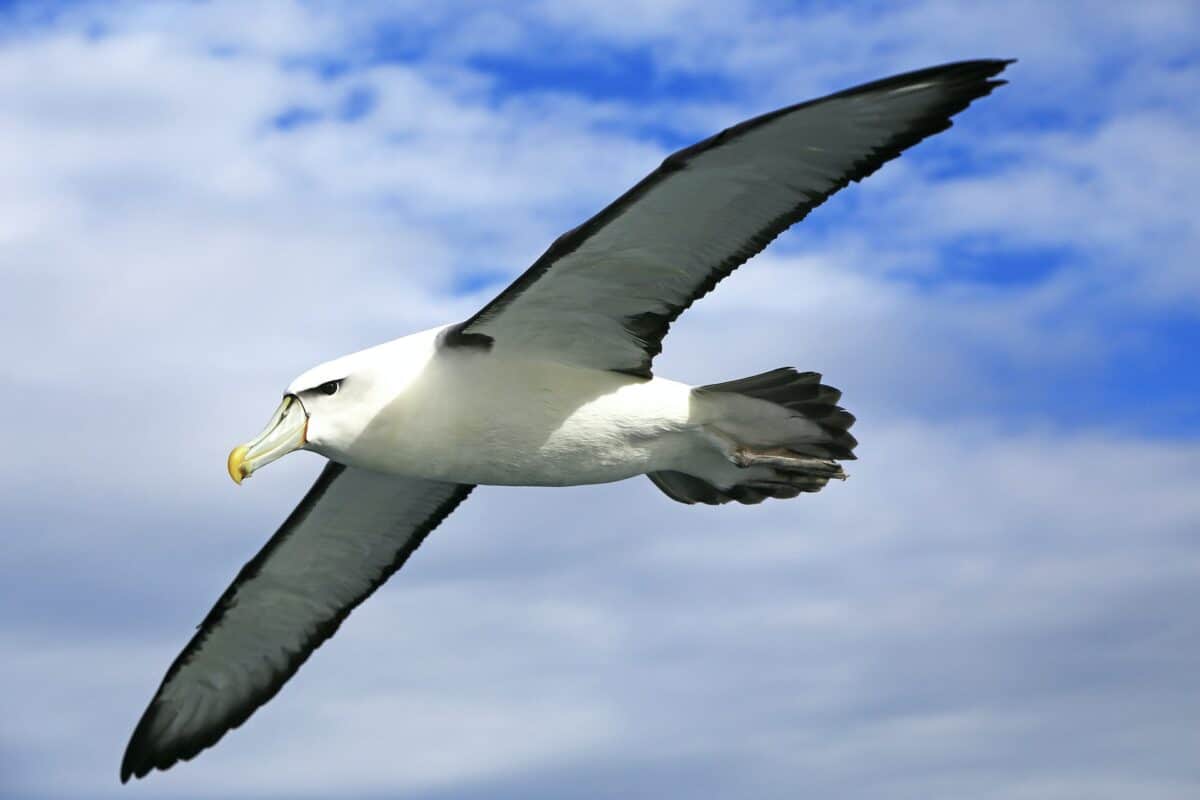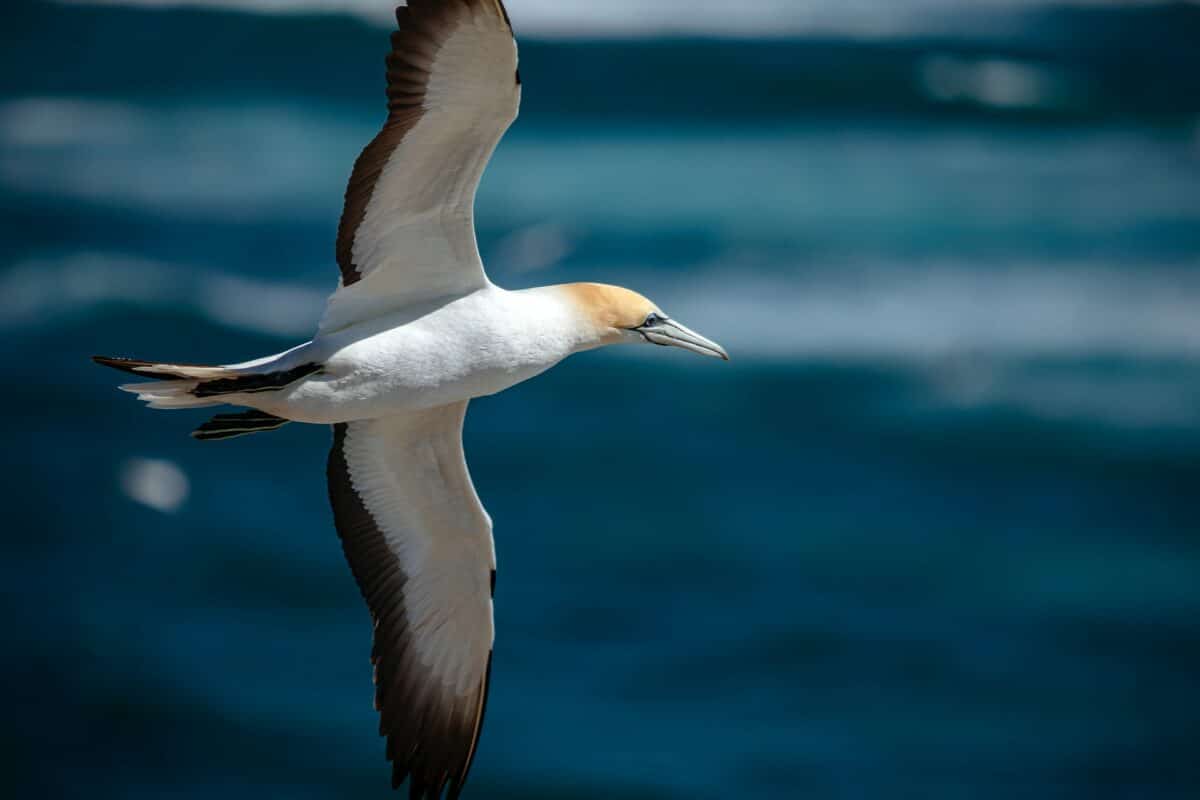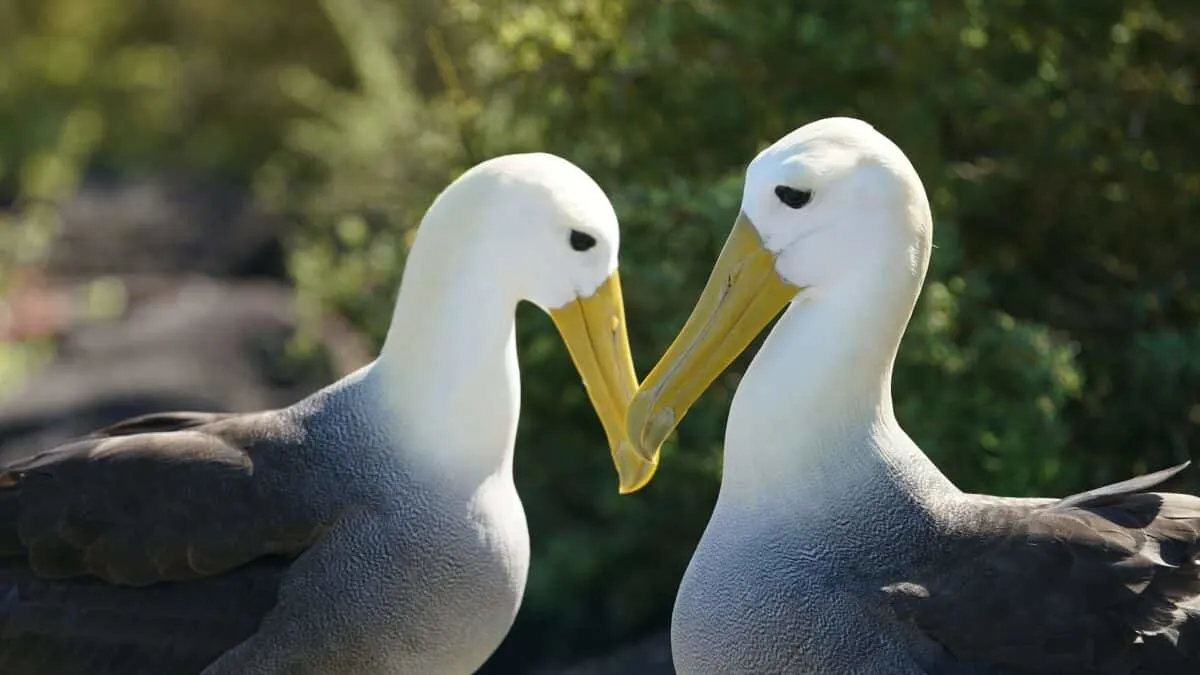The animal kingdom is filled with diverse incredible creatures, each with unique characteristics and abilities. Among them, the wandering albatross stands out as one of the most fascinating birds on the planet. With a wingspan of over three meters, it proudly holds the title of the largest flying bird in the world. These majestic creatures are known for their long-distance flights over the open ocean and remarkable resilience in surviving harsh weather conditions. Get ready to be amazed by this remarkable bird’s incredible abilities and features!

Soar to any section below!
Physical Characteristics
The wandering albatross can span over three meters, making it the largest flying bird in the world. This feature sets the wandering albatross apart from all other birds, giving it a unique and majestic appearance. As for their weight, albatrosses are relatively light despite their size, weighing in at around 7-11 kilograms.
Wingspan
The wandering albatross’s wingspan is a marvel of nature. Its wings are incredibly long and broad, specifically suited to gliding over long distances. Although they may look cumbersome, these wings are perfectly designed to give the bird maximum lift while minimizing drag during flight. This allows the wandering albatross to fly great distances without too much energy.

Feather Colors
The wandering albatross is mainly white, with black feathers on its back and wings. The color of its feathers gives the wandering albatross a striking appearance and serves a practical purpose. The white feathers help the bird blend with its surroundings, making it less visible to potential predators. On the other hand, the black feathers on its back help absorb heat, which is important when flying over the open ocean.
Beak Shape
The wandering albatross’ beak is distinctive, with a hooked shape perfectly suited to its diet. These birds are primarily scavengers and will eat anything from squid to fish, with the occasional seal carcass thrown in. Their hooked beak helps them rip apart tough materials, such as fish skin, which they swallow whole.
Check out: Unearth the Reality of Georgia’s Brown Recluse Spiders.
Behavior And Lifestyle Of The Wandering Albatross

The wandering albatross is not just a remarkable bird because of its physical characteristics, it also showcases fascinating behaviors that have captivated researchers and bird enthusiasts alike. In this section, we delve into the distinct behaviors of the wandering albatross, including its breeding habits, migration patterns, hunting techniques, and socialization within flocks.
Breeding Habits
Breeding is a crucial part of the wandering albatross’s life cycle, and they typically breed on remote sub-Antarctic islands. These islands provide a haven for the birds to mate and rear their young without the threat of predators. Breeding pairs will mate for life; every breeding season, they will mate and produce a single egg that they take turns incubating. During incubation, the male and female albatrosses stay in the nest to keep the egg warm. Once the egg hatches, the parents feed the chick, regurgitating food from their stomachs to feed their young.

Migration Patterns
One of the most unusual behaviors of the wandering albatross is its long-distance migration patterns. These birds can fly thousands of kilometers over the open ocean, often without resting, for months. The albatrosses do this to find food, as their main source of nutrition is squid and fish, which they hunt in the open ocean. The wandering albatross also has a unique way of navigating their migrations. They use the Earth’s magnetic field as a guide, using their ability to sense the Earth’s magnetic field to orient themselves and navigate their journeys.
Hunting Techniques
When it comes to hunting, the wandering albatross has developed unique techniques that allow them to thrive in the harsh and challenging conditions of open ocean hunting. They use their incredible eyesight and sense of smell to locate squid and fish in the water. Once they spot their prey, they use their long, powerful wings to fly just above the water’s surface, dipping their beaks into the water to snatch up their meal.
Check out: Surviving the Realm of Tiger Snake Bites.
Socialization Within Flocks
The wandering albatross is a highly social bird, often forming large flocks when not breeding. These flocks provide safety and companionship for the birds while on their long journeys. They also perform elaborate courtship rituals within these flocks, using intricate dance moves and calls to attract potential mates.
Check out: Lost Cat’s Remarkable Cross-Country Journey Home.
Conservation Status Of The Wandering Albatross

The wandering albatross is undoubtedly one of the most striking birds on the planet. Unfortunately, it is one of the most vulnerable species and is listed as “endangered” under the IUCN Red List, meaning it is at risk of extinction. The wandering albatross faces numerous threats to its population, including climate change, habitat loss, and human activities such as fishing, pollution, and plastic waste.
Threats To Wandering Albatross Population
Climate change has caused a significant impact on the wandering albatross population. Changes in water temperature and ice cover affect the bird’s food supply, which can result in lower breeding success rates. The increase in plastic waste has also led to many albatrosses suffering entanglement and ingestion of plastic debris, resulting in death. The longline fishing industry is another serious threat to their population, with these birds accidentally killed by fishing hooks and nets.
Conservation Efforts
Several conservation efforts have been implemented to combat these threats to the wandering albatross population. The Agreement on the Conservation of Albatrosses and Petrels (ACAP) is an international agreement aimed to conserve albatross and petrel species and reduce the impact of harmful fishing practices.
The ACAP framework has implemented measures such as using bird-scaring streamers and setting longline fishing at night to avoid seabirds. There are also efforts to reduce plastic pollution through cleanup projects and recycling campaigns.
Success Stories
Despite the threats, there are some success stories. For example, in Macquarie Island, a designated United Nations Educational, Scientific, and Cultural Organization (UNESCO) World Heritage Site, the wandering albatross population is thriving due to strict conservation measures, including removing introduced animals such as rats and rabbits, which prey on the bird’s eggs and chicks.
Further efforts have led to the reduction of bird deaths due to fishing hooks. In South Africa, using small circle hooks has reduced the number of albatrosses caught in fishing gear by over 90%. These hooks do not harm the birds and can be easily removed if caught.
FAQs
The wingspan of a Wandering Albatross can reach up to 11 feet, the largest of any bird in the world.
Wandering Albatross mainly feeds on fish and squid and can travel up to 600 miles daily to find food.
Wandering Albatross can live for up to 50 years and are known for their lifelong monogamous breeding pairs and unique courtship rituals.
Key Points
| The wandering albatross’ wingspan is a marvel of nature. Its wings are incredibly long and broad, specifically suited to gliding over long distances. |
| Their hooked beak helps them rip apart tough materials, such as fish skin, which they swallow whole. |
| One of the most unusual behaviors of the wandering albatross is its long-distance migration patterns. These birds can fly thousands of kilometers over the open ocean, often without resting, for months. |
| Breeding is a crucial part of the wandering albatross’s life cycle, and they typically breed on remote sub-Antarctic islands. |
| The increase in plastic waste has led to many albatrosses suffering entanglement and ingestion of plastic debris, resulting in death. |
Last Words
The wandering albatross is an extraordinary bird that continues to capture the hearts and minds of scientists, birdwatchers, and nature enthusiasts worldwide. Its remarkable wingspan, ability to fly long distances over the open ocean, and resilience in harsh weather conditions are just a few qualities that set this bird apart from its peers. It’s no wonder that the wandering albatross is the world’s largest flying bird. With all its fantastic abilities and characteristics, it’s an animal kingdom marvel that deserves all the admiration and respect it gets.
Thanks for reading along! See below for related article links.
Next up:
- Great White Shark Vs. Bull Shark
- The World’s Largest Land Predator: The Polar Bear
- Gorilla Vs. African Forest Buffalo
- Unveiling The Longest Snake In the World
- Discover Pennsylvania’s Hidden Threat: The Timber Rattlesnake
Join our Forum for free today!

- Huge Pet Bison Breaks Into House - July 22, 2024
- Giant Black Bear Surprises Beachgoers by Emerging from the Ocean in Florida - July 22, 2024
- Brave Man Plays Instrument While Huge Bear Caresses His Shoulder - July 22, 2024


